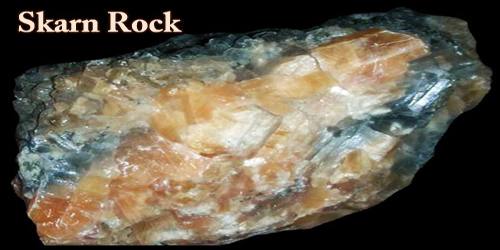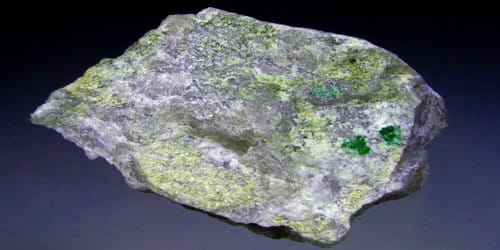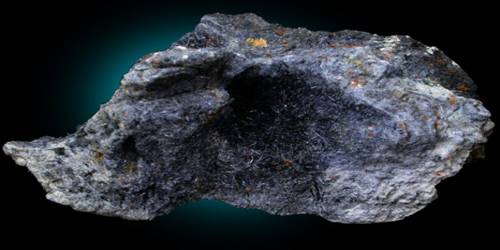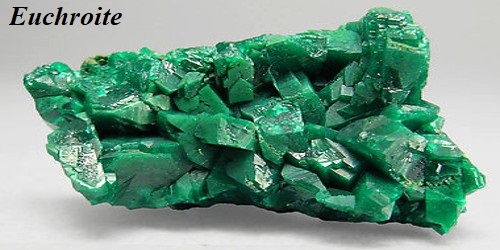Oolitic Limestone is made up of small spheres called ooiliths that are stuck together by lime mud. They form when calcium carbonate is deposited on the surface of sand grains rolled (by waves) around on a shallow seafloor.
Oolite or oölite (egg stone) is a sedimentary rock formed from ooids, spherical grains composed of concentric layers. The name derives from the Ancient Greek word ᾠόν for egg. Strictly, oolites consist of ooids of diameter 0.25–2 millimeters; rocks composed of ooids larger than 2 mm are called pisolites (made up of spherical shapes called pisoids).
The terms pisolite and pisoids come from the ancient Greek word for pea, so think of the size of the spherical shapes observed in the stone like a group of small peas. The term oolith can refer to oolite or individual ooids.
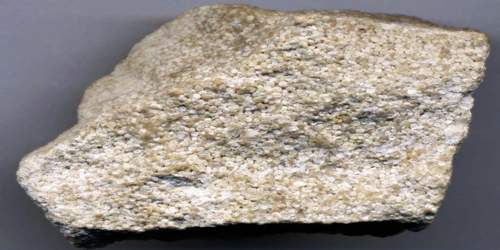
Formation and Composition –
Ooids are normally formed in warm, shallow seas that contain a lot of calcium and other minerals dissolved within the seawater. Intertidal movements or currents aid in the transport of the material which helps in the formation of the ooid structures, but oolitic material can also form in freshwater. Fragments of shell or a sand grain can act as a “seed” giving the calcium carbonate a medium which it can form around. As these tiny “seeds” tumble around the sea bed they accumulate layers of precipitated calcite (another term for calcium carbonate), the size of the ooid (or pisoid) formed indicates the length of time the object has been exposed to the seawater before being buried by further sediment deposition. Therefore, pisoids, being larger than ooids have been present on the seafloor longer than ooids. Oolites with their “egg stone” grains superficially resemble sandstone and they can be white, grey or even yellow in color (such as Portland limestone). Under a high powered magnifying glass (or within a 20-megapixel image), the concentric rings which form the ooids can be easily made out.
One of the world’s largest freshwater lakebed oolites is the Shoofly Oolit, a section of the Glenns Ferry Formation on southwestern Idaho’s Snake River Plain. 10 million years ago, the Plain formed the bed of Lake Idaho. Wave action in the lake washed sediments back and forth in the shallows on the southwestern shore, forming ooids and depositing them on steeper benches near the shore in 2- to 40-foot thicknesses. When the lake drained (2 to 4 million years ago), the oolite was left behind, along with siltstone, volcanic tuffs, and alluvium from adjacent mountain slopes. The other sediments eroded away, while the more resistant oolite weathered into hummocks, small arches, and other intriguing natural “sculptures.” The Shoofly Oolite lies on public land west of Bruneau, Idaho managed by the Bureau of Land Management (BLM). The physical and chemical properties of the Shoofly Oolite are the setting for a suite of rare plants, which the BLM protects through land use management and on-site interpretation.
This type of limestone is also found in Indiana in the United States. The town of Oolitic, Indiana, was founded for the trade of limestone and bears its name. Quarries in Oolitic, Bedford, and Bloomington contributed the materials for such iconic U.S. landmarks as the Empire State Building in New York and the Pentagon in Arlington, Virginia. Many of the buildings on the Indiana University campus in Bloomington are built with native oolitic limestone material, and the Soldiers’ and Sailors’ Monument in downtown Indianapolis, Indiana, is built mainly of grey oolitic limestone.
Composition and Uses –
Ooids are most commonly composed of calcium carbonate (calcite or aragonite), but can be composed of phosphate, clays, chert, dolomite or iron minerals, including hematite. Dolomitic and chert ooids are most likely the result of the replacement of the original texture in limestone. Oolitic hematite occurs at Red Mountain near Birmingham, Alabama, along with oolitic limestone.
Oolites are often used in the home aquarium industry because their small grain size (0.2 to 1.22 mm) is ideal for shallow static beds and bottom covering of up to 1″ in depth. Also known as “oolitic” sand, the sugar-sized round grains of this sand pass easily through the gills of gobies and other sand-sifting organisms. Importantly, this unusually smooth sand promotes the growth of bacteria, which are important biofilters in home aquaria. Because of its extremely small grain size, oolitic sand has a lot of surface area, which promotes high bacterial growth.
Information Sources:

